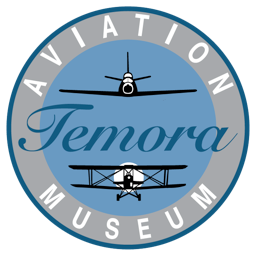raaf ca-27 sabre
Rego: VH-IPN Military S/N: A94-983

A significant commitment to preserving historical military aircraft was made by the Chief of Air Force, Air Marshal Geoff Shepherd when he signed an agreement with the Temora Aviation Museum during a ceremony at the museum on Saturday November 26th 2005.
Under the agreement, co-signed by the Founder and President of the Museum Mr David Lowy, the Royal Australian Air Force (RAAF) will loan one of its historic aircraft to the Temora Aviation Museum (TAM). Following the establishment of the RAAF Heritage Advisory Council, the agreement represents a further move to ensure that important pieces of the RAAF’s heritage are not only preserved but made available to the Australian public.
Recognising the significance of the agreement, the Chief of Air Force commended the Museum for the initiative and continued support. “This agreement will help safeguard an important piece of Australian aviation history”, Air Marshal Shepherd said. “Mr Lowy’s shared passion for aviation heritage and the expertise of the museum staff will go a long way to supporting the RAAF’s endeavours to keep Australian war history accessible to future generations”.
As a result of the agreement, the Sabre jet, flown throughout Australia and South East Asia by the RAAF, was restored to flying condition by TAM and has become a feature of our regular schedule of flying days, which are open to the public.
The History of CAC Avon Sabre A94-983
Delivered from Commonwealth Aircraft Corporation (CAC) in November 1957, A94-983 was brought into service at No. 1 Aircraft Depot at Laverton before undergoing test flights at the Aircraft Research and Development Unit for three weeks. Upon completion, the aircraft was delivered to No. 78 Wing at Williamtown, and was subsequently allotted to No. 3 Squadron at Butterworth in October 1958. In February 1959, the aircraft made a wheels-up landing at Butterworth, with extensive damage to the underside of the airframe, and was transported back to CAC at Avalon for the survey and costing of repair work.
After repair, A94-983 was allocated to No. 76 Squadron in February 1961, and was operated until July 1963, when the aircraft was moved by C-130 to No 78 Wing, Butterworth. During 1964 to 1966 it was allocated to No 77 Squadron and flew operational missions in Confrontation with Indonesia. In November 1966, the aircraft was returned to Williamtown and allocated to No. 2 (Fighter) Operational Conversion Unit. By July 1970, the aircraft had moved to No. 5 Operational Training Unit, before returning to No. 2 (Fighter) Operational Conversion Unit in August 1971. The aircraft was selected and prepared in late 1971 for transfer to the Royal Malaysian Air Force as part of the Australian gift. In November 1971, the aircraft was ferried to Butterworth, for service with her new owner
Transferred to No. 11 Squadron of the Royal Malaysian Air Force in December 1971 as serial no FMI983, the aircraft flew until 1976, when it was grounded awaiting disposal. ‘Rescued’ from its fate by No. 75 Squadron, based at Butterworth, an ‘E’ Servicing was carried out over 12 months and A94-983 flew again in July 1978 in RAAF hands. A94-983 was then shipped back to Australia, and restored by No. 2 Aircraft Depot. A94-983 was first displayed in public in March 1981. In November 1984, the aircraft carried out a forced landing and over-run at Bendigo, Victoria. The aircraft continued to be displayed by the RAAF Museum, and operated under the auspices of the Caribou and Historic Aircraft Section (CHAS) located at Richmond until 1992, and was relocated to Point Cook upon the disbandment of CHAS in 1997.
In January 2006, A94-983 was transported by road to the Temora Aviation Museum where a comprehensive return to service program commenced. Two Rolls Royce Avon engines (including one spare engine) were delivered to Temora onboard a RAAF C-130J Hercules aircraft. The restoration of the Sabre commenced in May 2006 and culminated with the successful post maintenance check flights, the first one taking place on Thursday 16 July 2009.
The Sabre resides at the Temora Aviation Museum and will be displayed regularly at Temora Aviation Museum Showcase Days and select Australian Defence Force airshows.
Currently the Sabre is grounded due to Martin Baker no longer supporting legacy ejection seats such as in the Sabre. The RAAF is working towards a solution with a third party to return the Sabre to flight, although a date for this is yet to be determined.
SPECIFICATIONS
Engine
One Rolls-Royce/CAC RA.7 Avon Mk.26 axial flow turbojet
Fuel
Aviation Turbine Fuel (Jet Fuel)
Total internal fuel capacity of 412 imperial gallons (1,873 litres) in two fuselage tanks, two outer wing panel tanks and tanks in the leading edges.
Dimensions
Wingspan: 37' 1 ", 11.30 m
Length: 37' 6 ", 11.43 m
Wing Area: 302.3 sq. ft, 28.1 sq. m
Height: 14' 4", 4.37 m
Weights
Empty: 12,000 lb, 5,443 kg
Maximum Takeoff weight: 21,210 lb, 9,621 kg
Armament
Two 30mm Aden gas operated cannons with 162 rounds per gun mounted internally in the lower nose. External load can include two AIM-9B Sidewinder missiles, up to 24 ground rockets, two 500 or 1,000lb bombs or eight practice bombs.
Performance
Maximum Speed: 608 knots, 700 mph, 1,126 km/h
Cruise Speed: 477 knots, 550 mph, 885 km/h

